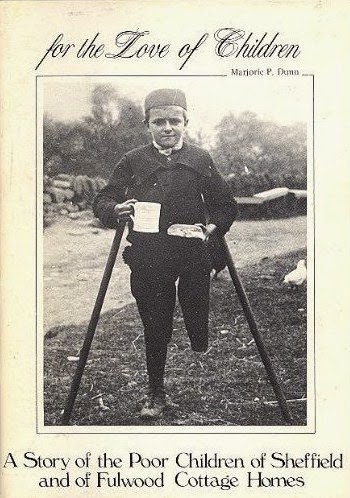Thinking about doing some cleaning ( not something that happens often) I walked round my house and looked at the pictures on the walls and noticed there were two distinct themes, either horses or woods. Over my fire is the very common print of The Three Kings. For some reason when I was wee I was a big fan of Arkle who is not as famous as his two fellow subjects (Red Rum and Desert Orchid) in the painting but it’s nice that he’s there all the same. Arkle’s owner famously said that she loved him too much to ever run him in the Grand National in case he came to harm.
The Three Kings by Susan Crawford
My favourite picture of all is a tiny print in a simple wood frame with a typed label on the back. It hung over my granny’s sideboard for many years. It has been a constant in my life, a feeling that I want to live in that house down this lane.
My granny too said it was her favourite picture. Yet it is so small, so unprepossessing, with no mount around it, no fancy frame. It’s held together by a bit of string. It’s not even a painting. It’s not even very good. The brown paper on the back looks as though it came from a paper bag and it is crumpled, torn and repeatedly stained with watermarks from the floods when my granny’s neighbours upstairs left their bath running.
Only 10 " by 8",
But the picture is beguiling. Enchanting.
I’m not sure if the picture is one of extreme calm or imminent threat. There is no light coming through the tree canopy, it’s all dark. There is a single winding path that is waterlogged leading up to a tiny cottage that may or may not have a thatched roof. The path seems to wind its way beyond the cottage into the only area of light so the viewer’s eye is taken from the darkness and into the light. From that point of view, the viewer has found themselves in the middle of the forest and faces a long walk to get out.
Even the way I wrote that ‘has found themselves’. … How did they get there?
The floor is covered in bluebells so it is spring and the trees are green but goodness knows how awful it would be in the winter. There is a sense of contented isolation about it and I’m sure this picture was in my mind when I wrote about the isolated cottage in Blood of Crows. But the picture asks a lot of questions. Who lives in that wee cottage? Why do they live in such a remote place? If you were brutally murdered there, would any body hear you scream. Would anybody find you if you were buried in amongst the bluebells? Forensic topography would mean nothing here. A mobile phone will not work here. You will be at the mercy of the spirits of the forest and the wood elves.
And the biggest question of all, if my granny liked it so much, why isn’t it in a nicer frame?
There is something of fairytale darkness about it, of Hansel and Gretel, and the Little Red Riding Hood. It is Grimm, if you pardon the pun.
I keep coming back to the isolation, the sense that you are on your own and you will either rise or fall but it will be by your own hand.
My gran, the owner of the picture, was orphaned as she was born, the youngest of 13 children and grew up in an orphanage. With her closest sisters, they lived together as a unit, with a house mother in a ‘small cottage’ somewhere outside Sheffield. There they learned to cook and sew and clean with a view to going into service. She dreamed of being a seamstress, always darned everything. I mean everything.
She never said a bad word about the orphanage, the ‘cottage homes’ as the system was called. They had food in their bellies and many folk didn’t in the north of England in those days ( we are talking early 1900 here). She grew up being terrified of ending up in the workhouse (which was what the Southern General of last week’s post was originally built for.) and while researching some pictures for the blog I realised why; the workhouses and the cottage homes were both part of the action on poverty at that time. So the home was not just for orphans, but for children whose families could no longer afford to keep them.
And it was a label of social disgrace. But Yorkshire girls are tough and I don’t think my gran ever noticed or if she did, she didn’t care. The only thing I heard her comment on occasionally, was the cruelty of the local village children to the cottage home children. They would bully and taunt the orphanage kids. It was a five mile walk, over rough ground, often in snow, from the orphanage to the school. The cottage children wore leather boots all year round. The boots were good quality and handed over from child to child as the foot size changed, to cope with the long walk to lessons – and the boots were the badge of ‘being different’ was how she put it.
All her life she stood up for the underdog and taking this literally, would come home with unwanted puppies and stray dogs with bits missing. She had a difficult life, moving to Glasgow to live in a Govan tenement over run with mice, being widowed and left with three children but she never lost her ‘we never died a winter yet’ attitude. Don’t get me wrong, she wasn’t a sweet nice little granny, she was more your functional granny. She was a strict disciplinarian and would bruise my knuckles by rapping them with a wooden spoon, when I misbehaved at the tea table.
Which was often.
At thirteen, the girls had to leave the cottage home to go out to work and in her first week of being a junior housemaid, she was crossing a road, avoiding a young man cutting a hedge. He took one look and said to her, ‘Are you Jessie Cadwallander’. It was one of her older brothers and the whole family slowly got back together again.
Only to be ripped apart by two world wars.
She was never one for looking back. She died at 105 without a bit of dementia, and apart from sight loss and hearing issues, she was in good health. It said on her death certificate ‘extreme old age’. And that canny be a bad thing.
Her secret to a long life? She didn’t drink ( one advocaat at Christmas and even then she couldn’t finish it as it was too strong). She always had a four legged companion somewhere. She worked hard (still in the community canteen in her seventies). She had, because of poverty, what we would call a good diet. She was green fingered and grew everything. Red meat was a rare thing. She ate fish, porridge and every morning started with a glass of water with a lemon squeezed into it. Her number one tip, be content with your own company. She was never ever lonely although she had few friends and lived on her own for the last fifty years of her life.
Which brings us back to the picture, and the isolation of that house, and the carpet of bluebells.
And where do I live now? In a house across the road from the woods that are known on the map as the bluebell woods. Every morning the dog and I go up there to be on our own. We don’t need company so we walk up on the high ground away from the handbag dogs and anything that ends with ‘doodle.’
I think it might be in the genes.
Caro Ramsay






















































